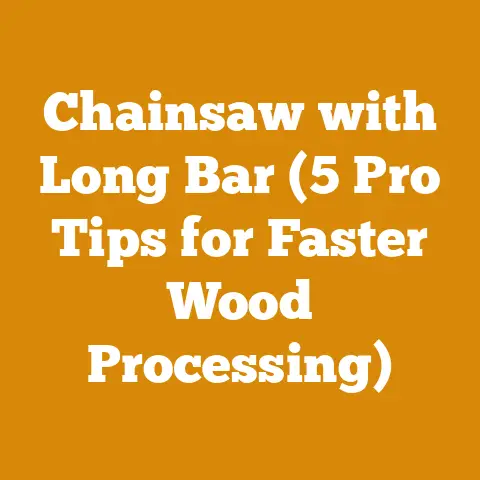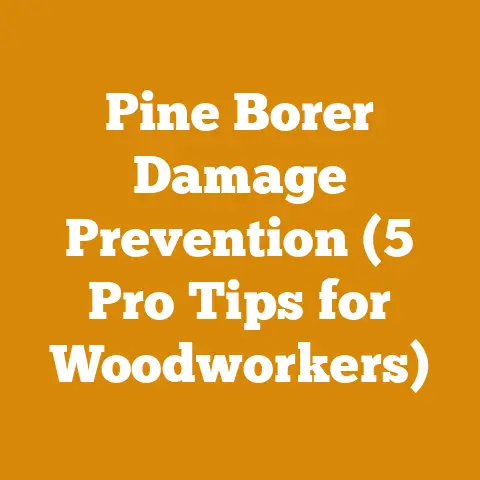Stihl Weed Sprayer Guide (Top 5 Tips for Powder & Herbicide Use)
The user intent of “Stihl Weed Sprayer Guide (Top 5 Tips for Powder & Herbicide Use)” is to find practical advice and instructions on how to effectively use a Stihl weed sprayer, specifically focusing on the application of powder and herbicide formulations.
This includes understanding the correct mixing ratios, nozzle selection, safety precautions, cleaning procedures, and troubleshooting common problems to achieve optimal weed control while minimizing risks to the environment and user health.
Stihl Weed Sprayer Guide (Top 5 Tips for Powder & Herbicide Use)
Craftsmanship, in any field, is about precision, understanding your tools, and respecting the materials you work with.
Whether I’m felling a tree with my trusty Stihl chainsaw or meticulously splitting firewood for the winter, I approach each task with a craftsman’s mindset.
Just like a woodworker cherishes their chisels, I cherish my Stihl weed sprayer.
It’s not just a tool; it’s an extension of my commitment to managing my land responsibly.
And believe me, I’ve learned a thing or two over the years, sometimes the hard way, about getting the most out of it, especially when dealing with powders and herbicides.
Let’s dive into my top 5 tips.
1. Mixing it Right: The Golden Ratio and Beyond
Getting the mixture right is the bedrock of effective weed control.
It’s not a ‘chuck it in and hope for the best’ situation.
Too weak, and you’re just feeding the weeds.
Too strong, and you risk damaging desirable plants, harming the environment, and potentially voiding the product warranty.
I’ve seen it all – yellowing grass, stunted growth, and even dead shrubs because someone didn’t pay attention to the label.
Read the Label, Twice: This is non-negotiable.
The herbicide label is your bible.
It details the exact mixing ratios for different weeds and application methods.
Pay close attention to whether the instructions are given in terms of weight (for powders) or volume (for liquids), and whether they are in metric or imperial units.
A simple conversion error can throw everything off.Powder Power: When dealing with powders, pre-slurrying is your best friend.
This means mixing the powder with a small amount of water in a separate container to create a smooth paste before adding it to the sprayer tank.
This helps prevent clumping and ensures even distribution.
I use a dedicated plastic container and a stick for this – never the same one I use for food!- Data Point: A study by the University of California, Davis, found that pre-slurrying powder herbicides reduced nozzle clogging by up to 40% compared to direct mixing in the tank.
Water Quality Matters: The type of water you use can significantly impact the effectiveness of your herbicide.
Hard water (water with high mineral content) can react with certain herbicides, reducing their efficacy.
Ideally, use soft water or distilled water.
If you’re unsure about your water quality, get it tested.
Many agricultural extension offices offer water testing services.- Statistical Insight: The USDA reports that approximately 85% of the United States has hard to very hard water.
This highlights the importance of considering water quality when mixing herbicides.
- Statistical Insight: The USDA reports that approximately 85% of the United States has hard to very hard water.
The Right Tools for the Job: Invest in accurate measuring cups and spoons specifically for herbicide mixing.
Don’t use kitchen utensils.
Label them clearly and store them separately to avoid cross-contamination.
A digital scale is invaluable for measuring powders accurately.- Cost Consideration: A basic digital scale suitable for herbicide mixing can be purchased for around $20-$30.
This is a small price to pay for accuracy and peace of mind.
- Cost Consideration: A basic digital scale suitable for herbicide mixing can be purchased for around $20-$30.
Mixing Order: Follow the recommended mixing order on the label.
Generally, this involves adding water to the tank first, followed by any compatibility agents or surfactants, then the herbicide (powder or liquid), and finally topping off with the remaining water.
Agitate the mixture thoroughly after each addition.- Personal Anecdote: I once made the mistake of adding the herbicide before the water.
The powder clumped up instantly, creating a thick, unusable mess that took me hours to clean out of the sprayer.
Lesson learned!
- Personal Anecdote: I once made the mistake of adding the herbicide before the water.
Calculating the Right Amount: It’s crucial to calculate the exact amount of herbicide needed based on the area you’re treating.
Overestimating leads to waste and potential environmental damage, while underestimating means you’ll have to re-treat, wasting time and resources.- Formula: Area to be treated (in square feet) / Coverage rate of herbicide (in square feet per gallon) = Gallons of mixed solution needed.
Then, use the mixing ratio from the label to determine the amount of herbicide to add per gallon of water.
- Formula: Area to be treated (in square feet) / Coverage rate of herbicide (in square feet per gallon) = Gallons of mixed solution needed.
2. Nozzle Know-How: Choosing the Right Tip for the Task
The nozzle is the unsung hero of your weed sprayer.
It controls the spray pattern, droplet size, and flow rate, all of which directly impact the effectiveness of your application.
Using the wrong nozzle can lead to uneven coverage, drift, and wasted product.
Understanding Nozzle Types: Stihl weed sprayers typically come with a variety of nozzles, each designed for specific applications.
Common types include:- Flat Fan Nozzles: These produce a flat, fan-shaped spray pattern, ideal for broadleaf weed control and covering large areas.
They provide even coverage but are more prone to drift in windy conditions. - Cone Nozzles: These produce a hollow or solid cone-shaped spray pattern, suitable for spot treating weeds and applying systemic herbicides.
They offer better penetration and reduced drift compared to flat fan nozzles. - Flood Nozzles: These produce a wide, flat spray pattern with large droplets, minimizing drift.
They are best for applying herbicides in windy conditions or near sensitive areas. - Adjustable Nozzles: These allow you to adjust the spray pattern from a fine mist to a solid stream, offering versatility for different applications.
However, they may not provide as consistent coverage as dedicated nozzles.
- Flat Fan Nozzles: These produce a flat, fan-shaped spray pattern, ideal for broadleaf weed control and covering large areas.
Nozzle Selection Chart: Consult the Stihl weed sprayer manual for a nozzle selection chart that recommends the appropriate nozzle type for different herbicides and weed types.
You can also find nozzle selection guides online from reputable sources like agricultural extension offices.- Example: For applying a pre-emergent herbicide to a large area of turf, a flat fan nozzle with a wide spray angle (e.g., 110 degrees) would be a good choice.
For spot treating dandelions in a flower bed, a cone nozzle would be more appropriate.
- Example: For applying a pre-emergent herbicide to a large area of turf, a flat fan nozzle with a wide spray angle (e.g., 110 degrees) would be a good choice.
Drift Reduction: Drift is a major concern when spraying herbicides, as it can damage non-target plants and contaminate water sources.
To minimize drift, use nozzles that produce larger droplets, such as flood nozzles or low-drift flat fan nozzles.
Spray on calm days with little to no wind, and avoid spraying during the hottest part of the day, as high temperatures can increase evaporation and drift.- Data Point: Studies have shown that using low-drift nozzles can reduce herbicide drift by up to 75% compared to standard nozzles.
Calibration is Key: Calibrate your sprayer regularly to ensure that it is delivering the correct amount of herbicide.
This involves measuring the output of the nozzle over a specific period of time and adjusting the sprayer pressure or walking speed accordingly.- Calibration Procedure: Fill the sprayer tank with water.
Spray a known area (e.g., 100 square feet) at a consistent pressure and walking speed.
Measure the amount of water used to spray that area.
Compare the amount used to the recommended application rate on the herbicide label.
Adjust the pressure or walking speed as needed to achieve the correct application rate.
- Calibration Procedure: Fill the sprayer tank with water.
Nozzle Maintenance: Clean your nozzles regularly to prevent clogging and ensure proper spray pattern.
Use a soft brush or compressed air to remove debris.
Never use metal objects, as they can damage the nozzle orifice.
Replace worn or damaged nozzles immediately.- Tip: Keep a spare set of nozzles on hand so you can quickly replace a clogged or damaged nozzle without interrupting your spraying.
3. Safety First: Protecting Yourself and the Environment
Herbicides are powerful chemicals that can pose risks to your health and the environment if not handled properly.
Prioritizing safety is paramount when using a Stihl weed sprayer.
I always tell people, “Better safe than sorry,” and it’s especially true when dealing with chemicals.
Personal Protective Equipment (PPE): Always wear appropriate PPE when mixing and applying herbicides.
This includes:- Gloves: Chemical-resistant gloves (e.g., nitrile or neoprene) to protect your skin from direct contact with the herbicide.
- Eye Protection: Safety glasses or a face shield to prevent herbicide from splashing into your eyes.
- Long Sleeves and Pants: To minimize skin exposure.
- Respirator: A NIOSH-approved respirator if the herbicide label requires it or if you are spraying in an enclosed space.
- Closed-Toe Shoes: To protect your feet.
Read the Safety Data Sheet (SDS): The SDS provides detailed information about the herbicide’s hazards, first aid measures, and handling precautions.
Familiarize yourself with the SDS before using any herbicide.
You can usually find the SDS online on the manufacturer’s website.Mixing and Loading Precautions: Mix and load herbicides in a well-ventilated area, away from children, pets, and food preparation areas.
Avoid splashing or spilling herbicide.
If you do spill, clean it up immediately with soap and water.Application Precautions:
- Weather Conditions: Avoid spraying on windy days to prevent drift.
Check the weather forecast before spraying and avoid spraying if rain is expected within 24 hours. - Target Areas: Only spray weeds that you intend to control.
Avoid spraying desirable plants, water sources, or sensitive areas. - Buffer Zones: Establish buffer zones around sensitive areas, such as water bodies, gardens, and playgrounds.
These are unsprayed areas that help prevent herbicide drift. - Re-entry Intervals: Observe the re-entry interval (REI) specified on the herbicide label.
This is the amount of time that must pass before people or pets can enter the treated area.
- Weather Conditions: Avoid spraying on windy days to prevent drift.
Storage and Disposal: Store herbicides in their original containers, tightly sealed, in a cool, dry, and secure location, away from children, pets, and food.
Never store herbicides in unmarked containers.
Dispose of empty herbicide containers properly according to local regulations.
Do not reuse empty containers.- Environmental Consideration: Triple-rinse empty herbicide containers with water and pour the rinse water into the sprayer tank before disposing of the container.
This helps remove any remaining herbicide and prevents contamination.
- Environmental Consideration: Triple-rinse empty herbicide containers with water and pour the rinse water into the sprayer tank before disposing of the container.
Emergency Procedures: Know what to do in case of an accidental exposure to herbicide.
If herbicide gets on your skin, wash it off immediately with soap and water.
If herbicide gets in your eyes, flush them with water for at least 15 minutes.
If you inhale herbicide, move to fresh air.
If you swallow herbicide, call a poison control center or seek medical attention immediately.
4. Cleaning and Maintenance: Extending the Life of Your Sprayer
A well-maintained Stihl weed sprayer is a reliable and efficient tool.
Regular cleaning and maintenance will extend its lifespan and ensure optimal performance.
Neglecting these tasks can lead to clogged nozzles, damaged seals, and premature failure.
I’ve seen sprayers ruined simply because they weren’t cleaned properly after each use.
Post-Spraying Cleaning: This is the most important step in maintaining your sprayer.
Immediately after spraying, empty any remaining herbicide solution from the tank.
Fill the tank with clean water and rinse it thoroughly.
Spray the rinse water through the nozzle to clean out the spray lines and nozzle.
Repeat this process at least twice.- Tip: Add a small amount of household ammonia to the rinse water to help neutralize any remaining herbicide.
Nozzle Cleaning: Remove the nozzle and clean it separately with a soft brush or compressed air.
Never use metal objects to clean the nozzle, as they can damage the orifice.Filter Cleaning: Clean the filter regularly to remove any debris that may have accumulated.
The filter is usually located in the tank or in the spray line.Winterization: If you live in an area with freezing temperatures, winterize your sprayer before storing it for the winter.
This involves:- Emptying the Tank: Completely empty the tank and spray lines.
- Adding Antifreeze: Add a small amount of RV antifreeze to the tank and pump it through the spray lines to protect them from freezing.
- Storing in a Warm Place: Store the sprayer in a warm, dry place to prevent damage from freezing.
Regular Inspection: Inspect your sprayer regularly for any signs of wear or damage.
Check the hoses, seals, and nozzles for cracks or leaks.
Replace any worn or damaged parts immediately.- Cost Consideration: Replacing a worn hose or seal is much cheaper than replacing the entire sprayer.
Lubrication: Lubricate the pump and other moving parts of the sprayer regularly with a silicone-based lubricant.
This will help keep the sprayer running smoothly and prevent corrosion.Proper Storage: Store your sprayer in a clean, dry place, away from direct sunlight and extreme temperatures.
This will help prevent damage to the sprayer’s components.
5. Troubleshooting Common Problems: Diagnosing and Fixing Issues
Even with proper care and maintenance, you may encounter problems with your Stihl weed sprayer from time to time.
Knowing how to diagnose and fix these issues can save you time and money.
I’ve spent countless hours tinkering with my equipment, and I’ve learned that a little troubleshooting can go a long way.
Clogged Nozzle: This is one of the most common problems with weed sprayers.
It is usually caused by debris or dried herbicide blocking the nozzle orifice.- Solution: Remove the nozzle and clean it thoroughly with a soft brush or compressed air.
If the nozzle is severely clogged, you may need to soak it in a solvent or replace it.
- Solution: Remove the nozzle and clean it thoroughly with a soft brush or compressed air.
Low Pressure: Low pressure can be caused by a clogged filter, a worn pump, or a leak in the spray lines.
- Solution: Check the filter and clean it if necessary.
Inspect the spray lines for leaks and repair them.
If the pump is worn, you may need to replace it.
- Solution: Check the filter and clean it if necessary.
Uneven Spray Pattern: An uneven spray pattern can be caused by a clogged nozzle, a damaged nozzle, or low pressure.
- Solution: Clean or replace the nozzle.
Check the pressure and adjust it as needed.
- Solution: Clean or replace the nozzle.
Sprayer Not Pumping: This can be caused by a clogged filter, a worn pump, or a leak in the spray lines.
- Solution: Check the filter and clean it if necessary.
Inspect the spray lines for leaks and repair them.
If the pump is worn, you may need to replace it.
- Solution: Check the filter and clean it if necessary.
-
Herbicide Leaks: Herbicide leaks can be caused by damaged hoses, loose connections, or worn seals.
- Solution: Inspect the hoses, connections, and seals for damage and repair or replace them as needed.
Sprayer Freezing: If you live in an area with freezing temperatures, your sprayer can freeze and become damaged.
- Solution: Winterize your sprayer before storing it for the winter.
This involves emptying the tank and spray lines and adding RV antifreeze.
- Solution: Winterize your sprayer before storing it for the winter.
Manufacturer Resources: Always consult the Stihl weed sprayer manual for specific troubleshooting tips and diagrams.
Stihl also offers online support and resources on their website.- Tip: Many common sprayer problems can be resolved with simple maintenance and cleaning.
Don’t be afraid to disassemble and inspect your sprayer to identify the source of the problem.
- Tip: Many common sprayer problems can be resolved with simple maintenance and cleaning.
By following these top 5 tips, you can get the most out of your Stihl weed sprayer and achieve effective weed control while minimizing risks to yourself and the environment.
Remember, craftsmanship extends beyond woodworking and logging – it’s about approaching every task with care, knowledge, and a commitment to doing it right.
Cost Considerations for Weed Control
I often get asked about the costs associated with weed control, and it’s a valid concern.
Managing weeds isn’t just about the right techniques; it’s also about budgeting effectively.
The costs can vary significantly depending on several factors.
Let’s break it down.
Herbicide Costs
- Type of Herbicide: Selective herbicides, which target specific weeds without harming desirable plants, tend to be more expensive than non-selective herbicides, which kill all vegetation.
- Data Point: Glyphosate, a common non-selective herbicide, can cost around $20-$30 per gallon, while selective herbicides for broadleaf weed control in turf can range from $40-$80 per gallon.
- Formulation: Concentrated herbicides are generally more cost-effective than ready-to-use formulations, as you can dilute them to the desired concentration.
However, they require more precise mixing. - Quantity: Buying herbicides in bulk can often result in significant savings, but only if you have a large area to treat and can store the herbicide properly.
- Brand: Name-brand herbicides are often more expensive than generic brands, but they may offer better performance or a wider range of formulations.
- Application Rate: The application rate recommended on the herbicide label will directly impact the amount of herbicide you need to purchase.
- Example: If an herbicide requires an application rate of 2 ounces per 1,000 square feet and you need to treat 10,000 square feet, you will need 20 ounces of herbicide.
Equipment Costs
- Weed Sprayer: The cost of a weed sprayer can range from a few dollars for a small handheld sprayer to several hundred dollars for a professional-grade backpack sprayer or tow-behind sprayer.
- Stihl Sprayer Cost: Stihl weed sprayers typically range from $100 to $500, depending on the model and features.
- Nozzles: Replacement nozzles can cost a few dollars each.
- Personal Protective Equipment (PPE): The cost of PPE can range from a few dollars for gloves and safety glasses to several hundred dollars for a respirator and chemical-resistant suit.
- Calibration Equipment: Equipment for calibrating your sprayer, such as measuring cups and scales, can cost around $20-$50.
Labor Costs
- DIY vs.
Professional: If you choose to apply the herbicide yourself, you will save on labor costs, but you will need to factor in the time and effort required.
Hiring a professional landscaping company or weed control service will cost more, but it can save you time and ensure that the job is done correctly.- Industry Benchmark: The average cost of professional weed control services can range from $50 to $150 per application, depending on the size of the area and the type of weeds being treated.
- Hourly Rate: If you hire someone to apply the herbicide, the hourly rate can vary depending on their experience and location.
- Travel Time: Factor in travel time if you are hiring someone to come to your property.
Other Costs
- Permits: Some areas may require permits for applying certain herbicides.
- Water: The cost of water can be a significant factor, especially if you are treating a large area.
- Fuel: If you are using a gas-powered sprayer, you will need to factor in the cost of fuel.
- Insurance: If you are hiring someone to apply the herbicide, make sure they have adequate insurance coverage.
Cost Optimization Tips
- Spot Treatment: Focus on spot treating weeds instead of spraying entire areas.
This can significantly reduce the amount of herbicide you need to use. - Integrated Weed Management (IWM): Use a combination of methods, such as hand-pulling weeds, mulching, and using herbicides, to control weeds.
This can reduce your reliance on herbicides and lower your overall costs. - Preventative Measures: Take steps to prevent weeds from establishing in the first place.
This can include using weed-free soil, mulching, and maintaining healthy turf. - Timing: Apply herbicides at the optimal time of year for maximum effectiveness.
This can reduce the need for multiple applications. - Calibration: Calibrate your sprayer regularly to ensure that you are applying the correct amount of herbicide.
- Comparison Shopping: Shop around for the best prices on herbicides and equipment.
- DIY vs.
Professional: Evaluate whether it is more cost-effective to apply the herbicide yourself or hire a professional.
Budgeting Example
Let’s say I want to treat 5,000 square feet of my property for broadleaf weeds.
Here’s a rough estimate of the costs:
- Herbicide: A selective herbicide costs $50 per gallon, and the application rate is 1 ounce per 1,000 square feet.
I will need 5 ounces of herbicide, which is approximately 0.04 gallons.
The cost of the herbicide will be $2. - Weed Sprayer: I already have a Stihl weed sprayer, so there is no cost.
- PPE: I already have gloves and safety glasses, so there is no cost.
- Labor: I will be applying the herbicide myself, so there is no cost.
- Water: The cost of water is negligible.
The total cost for this project is estimated to be $2.
This is a very low cost, but it assumes that I already have the necessary equipment and PPE and that I am applying the herbicide myself.
Conclusion
Weed control can be a significant expense, but by understanding the various cost factors and implementing cost optimization strategies, you can effectively manage weeds without breaking the bank.
Remember, a well-planned approach that combines preventative measures, targeted treatments, and proper equipment maintenance is the key to long-term cost savings and a healthy, weed-free landscape.
As with any project involving chemicals and machinery, safety is paramount.
Always prioritize your well-being and the health of the environment when planning and executing your weed control strategy.






